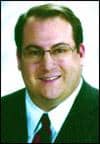by Marc B. Ackerman, DMD

To answer this question, we are compelled to better understand the basic tenets of the free-market economy that influence the use of our specialty’s services. The laws of supply and demand govern the market for orthodontic services. On the demand side, we have two groups seeking orthodontic services: the independent patient and the third-party payor acting on behalf of the individual patient. They both share the simple goal of purchasing orthodontic services at the best possible price. That is to say, they are also consumers.
On the supply side, let’s assume that three internal and three external groups relative to the AAO directly impact the current and future delivery of orthodontics to the market. The internal providers are orthodontic residents, orthodontic educators, and private-practice orthodontists. The external providers are pediatric dentists, general dentists, and corporate entities that own and operate clinical facilities. Each acts with a simple goal, which is to secure a presence in the orthodontic marketplace. Some orthodontists have argued that the external providers are threatening the commoditization of orthodontic services.
The term “commodity” has two different meanings.1 In business usage, a commodity is an undifferentiated product whose market value derives from the owner’s right to sell rather than the right to use. Since many different producers deliver great quantities of a given commodity to the market, we must assume that a commodity’s value is defined by an underlying, uniform standard of quality rather than any quality inherent in the product itself. To gain economic advantage, producers will endeavor to “de-commodify” their products. This is accomplished through the process of branding, which makes similar products manufactured by different producers more distinguishable. As a result, branded items fetch a higher price in the product market relative to similar items in the commodity market. In Marxian political economic theory, a commodity represents a quantity of human labor. A commodity more specifically has a use value, an exchange value, and a price.2
Orthodontic services, as delivered by internal providers, have always been considered a Marxian commodity. We do not have to create a new brand in order to convince the public that our intentions serve the best interests of the patient. Nonetheless, we must realize that today’s consumer perceives orthodontic treatment as just “getting braces” and does not see a dichotomy between the services offered by internal and external providers. This shift in consumer thinking has devalued the orthodontic specialty and consequently lowered the price of orthodontics in the marketplace. If organized orthodontics decides to define our specialty as something more than just “getting braces” or “fixing bites,” we may possibly regain competitive advantage.
In the United States, orthodontic health care is transacted in a free-market system, in which all economic decisions and actions by individuals regarding the procurement of services are voluntary and are devoid of coercion. When individuals elect to receive orthodontic treatment from an external provider, we must accept it as competition, a necessary mechanism of the free market, and also appreciate it as an American value called freedom of choice. Contemporary capitalism favors a laissez-faire approach to the free market, and maintains that the market will dispense with inefficiencies in a swifter and more deliberate manner than any legislating body. A clear example of a protectionist approach rather than a laissez-faire approach to the market is the AAO’s decision to relentlessly challenge the legitimacy of Jacksonville University’s orthodontic program in light of the current crisis in orthodontic education.3,4
So as tempting as it seems, spending millions of dollars on a media blitz alerting patients to the value of “getting braces” from an AAO member will most likely result only in a modest increase in private practice revenue—at the cost of dollars better spent on orthodontic education.
Organized orthodontics’ first course of action should be to better define what orthodontics really is: a specialized branch of enhancement health care. A more forward-thinking and fiscally responsible policy would acknowledge the market’s ability to self-adjust and to root out unqualified practitioners.
In the long run, the only group that will truly benefit from the creation and mass marketing of the “same old braces” brand are those external providers who share the consumer’s view that orthodontic treatment is a wholesale business commodity rather than a specialized service in enhancement health care. z
Marc B. Ackerman, DMD, is a diplomate of the American Board of Orthodontics and a clinical associate professor in the Temple University Department of Orthodontics. He can be reached at (610) 527-3678 or [email protected].
ACKNOWLEDGEMENT
The author would like to thank Professor Peter Karl Kresl, the Charles P. Vaughan Chair of Economics at Bucknell University, for his assistance in preparing this essay.
References
1. Wikipedia, the free encyclopedia. Available at: http://en.wikipedia.org/wiki/Commodity Accessed February 13, 2006.
2. Marx, K. Das Kapital. Hamburg: 1867.
3. AAO files new complaint on Jacksonville University accreditation. American Association of Orthodontists-The Bulletin. February 2004.
4. Fewer faculty members, decreased funding threaten future of graduate orthodontic programs. American Association of Orthodontists-The Bulletin. July 2005.









